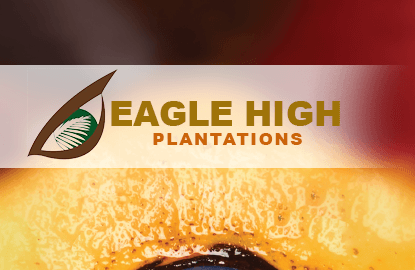
PT Eagle High Plantations Tbk was formed as a result of a reverse takeover of PT BW Plantation Tbk by Rajawali Group’s plantation unit Green Eagle Holdings Ltd last year via a rights issue. With a total landbank of some 425,000 hectares spanning four Indonesian provinces, the company’s fresh fruit bunch capacity stood at two million tonnes per annum.
From its total planted landbank of 151,000ha, some 130,000ha comprise trees with a crop age profile of below eight years old. Half of the planted landbank will reach prime within five years, a fact which goes some way towards explaining FGV’s keen interest in acquiring a stake in Eagle High.
To recap, the Malaysian plantation player is proposing to acquire a 37% non-controlling stake in Eagle High from its controlling shareholder, Rajawali Corp, for approximately US$680 million, plus Rajawali’s sugar project for a further US$67 million. In all, FGV has to fork out US$747 million (RM2.8 billion), the bulk of which will be paid for in cash.
Analysts were mostly united in their view that the deal was expensive.
“We are negative on this deal as the proposed acquisition price of IDR775 per Eagle High share is at a 72% premium to its last closing price of IDR450 per share and a 267% premium to CIMB’s target price of IDR290 per share. The acquisition price values Eagle High at FY15 P/E of 63 times and P/BV of 3.6 times (which is significantly above peers’ and FGV’s own valuations) and we estimate this could dilute FGV’s earnings by 10% and raise the group’s net gearing ratio to 1.43 times,” CIMB Research’s note on FGV says.
It is also concerned that FGV may have to write down the value of Eagle High after the acquisition to reflect current market price.
“The write down could amount to RM1.07 billion (or 29 sen per FGV share),” it adds.
In a recent statement, FGV said the price paid for the landbank equates to US$17,400 per hectare, which it says is well below that of recent deals over the past three years. For example, Sime Darby Bhd paid US$25,900 per ha for New Britain Palm Oil Ltd’s 134,000ha landbank.
“Yes, Indonesian landbank transactions historically were lower at US$8,000 to US$12,000, but bear in mind that the lots in question were very small, averaging just 17,000ha each,” says a FGV spokesperson.
Despite the generous premiums, the quality of Eagle High’s greenfield assets are apparent.
“FGV may have a case (for the acquisition), albeit a long-term one, as deals involving a sizeable landbank are hard to come by. In short, this is potentially a transformational deal for FGV’s business despite a general gripe over the premium that it is proposing to pay,” says CIMB Indonesia Research analyst Maureen Natasha in a June 15 note.
However, questions remain on the potential added costs that will be incurred in the process of unlocking the company’s remaining landbank. Eagle High’s high debt position and urgent need for a new cash infusion are already known, as is the fact that FGV is unlikely to see any tangible return on investment from its RM2.8 billion purchase anytime soon.
What is less known is the status of Eagle High’s vast unplanted landbank, some of which could run afoul of sustainability and regulatory requirements. These concerns were first highlighted in a report last year by US-based Chain Reaction Research, a firm that specialises in scrutinising the environmental impact posed by palm oil companies.
For example, the research firm says that most plantation companies listed on the Jakarta Stock Exchange would have to carry out assessments to identify and preserve high conservation value (HCV) areas within their concessions. This information was not disclosed by Eagle High in recent disclosures nor in its latest annual report.
As a member of the Roundtable on Sustainable Palm Oil, Eagle High can be liable for compensation for previously cleared land that did not undergo HCV assessments.
Another factor that is still unclear is the enlarged entity’s peatland exposure. In its prospectus, BW Plantation revealed that some 17,000ha of its planted landbank is being cultivated on peatland. Green Eagle’s peatland exposure prior to the merger was not disclosed, given that it was previously a private company held by the Rajawali group.
Another key issue is the licensing requirements relating to the unplanted landbank portion held by Eagle High. The bulk of Eagle High’s total landbank, or some 234,000ha, comprise plots with location permits, or ijin lokasi.
According to Chain Reaction, location permits have a legal expiration date and are not necessarily converted into real plantation development rights. Just like during the previous RTO, this unplanted landbank portion now forms part of the large premium that FGV is willing to pay for the Eagle High deal.
Ultimately, these potential liabilities could hinder Eagle High’s already weakened cash flow. The company would have to raise new funds not only for unlocking the landbank, but also for servicing current debts. The question of who exactly will cough up the cash is still unclear for now.

This article first appeared in The Edge Malaysia Weekly, on June 22 - 28, 2015.
Save by subscribing to us for your print and/or digital copy.
P/S: The Edge is also available on Apple's AppStore and Androids' Google Play.